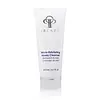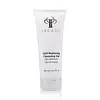What's inside
What's inside
 Benefits
Benefits

 Concerns
Concerns

 Ingredients Side-by-side
Ingredients Side-by-side

Water
Skin ConditioningCocamidopropyl Betaine
CleansingSodium Lauryl Sulfoacetate
CleansingSodium Methyl 2-Sulfolaurate
CleansingCera Alba
EmollientCopernicia Cerifera Wax
Acrylates Copolymer
Glycerin
HumectantHoney
HumectantSodium Chloride
MaskingCaprylyl Glycol
EmollientDisodium 2-Sulfolaurate
CleansingHexylene Glycol
EmulsifyingBenzyl Benzoate
AntimicrobialAminomethyl Propanol
BufferingPotassium Sorbate
PreservativeSodium Benzoate
MaskingParfum
MaskingCoumarin
PerfumingWater, Cocamidopropyl Betaine, Sodium Lauryl Sulfoacetate, Sodium Methyl 2-Sulfolaurate, Cera Alba, Copernicia Cerifera Wax, Acrylates Copolymer, Glycerin, Honey, Sodium Chloride, Caprylyl Glycol, Disodium 2-Sulfolaurate, Hexylene Glycol, Benzyl Benzoate, Aminomethyl Propanol, Potassium Sorbate, Sodium Benzoate, Parfum, Coumarin
Water
Skin ConditioningSodium Lauryl Sulfoacetate
CleansingSodium Chloride
MaskingSodium Methyl 2-Sulfolaurate
CleansingPanthenol
Skin ConditioningHydroxypropyl Methylcellulose
Emulsion StabilisingAllantoin
Skin ConditioningDisodium 2-Sulfolaurate
CleansingLaminaria Japonica Extract
Skin ProtectingMalva Sylvestris Leaf Extract
Skin ConditioningPlukenetia Volubilis Seed Extract
Skin ConditioningButylene Glycol
HumectantChlorphenesin
AntimicrobialBenzoic Acid
MaskingSorbic Acid
PreservativeCaprylyl Glycol
EmollientPhenoxyethanol
PreservativeHexylene Glycol
EmulsifyingParfum
MaskingWater, Sodium Lauryl Sulfoacetate, Sodium Chloride, Sodium Methyl 2-Sulfolaurate, Panthenol, Hydroxypropyl Methylcellulose, Allantoin, Disodium 2-Sulfolaurate, Laminaria Japonica Extract, Malva Sylvestris Leaf Extract, Plukenetia Volubilis Seed Extract, Butylene Glycol, Chlorphenesin, Benzoic Acid, Sorbic Acid, Caprylyl Glycol, Phenoxyethanol, Hexylene Glycol, Parfum
Ingredients Explained
These ingredients are found in both products.
Ingredients higher up in an ingredient list are typically present in a larger amount.
Caprylyl Glycol is a humectant and emollient, meaning it attracts and preserves moisture.
It is a common ingredient in many products, especially those designed to hydrate skin. The primary benefits are retaining moisture, skin softening, and promoting a healthy skin barrier.
Though Caprylyl Glycol is an alcohol derived from fatty acids, it is not the kind that can dry out skin.
This ingredient is also used as a preservative to extend the life of products. It has slight antimicrobial properties.
Learn more about Caprylyl GlycolWe don't have a description for Disodium 2-Sulfolaurate yet.
Hexylene Glycol is a surfactant. Glycols are a class of alcohols. Hexylene Glycol is a surfactant and emulsifier.
As a surfactant, Hexylene Glycol helps gather dirt and oil on your skin to be washed away.
As an emulsifier, Hexylene Glycol helps keep water and oil together. This prevents them from separating in a product. Hexylene Glycol also thins out the texture of a product by lessening viscosity.
Hexylene Glycol has a small molecular weight.
Learn more about Hexylene GlycolParfum is a catch-all term for an ingredient or more that is used to give a scent to products.
Also called "fragrance", this ingredient can be a blend of hundreds of chemicals or plant oils. This means every product with "fragrance" or "parfum" in the ingredients list is a different mixture.
For instance, Habanolide is a proprietary trade name for a specific aroma chemical. When used as a fragrance ingredient in cosmetics, most aroma chemicals fall under the broad labeling category of “FRAGRANCE” or “PARFUM” according to EU and US regulations.
The term 'parfum' or 'fragrance' is not regulated in many countries. In many cases, it is up to the brand to define this term.
For instance, many brands choose to label themselves as "fragrance-free" because they are not using synthetic fragrances. However, their products may still contain ingredients such as essential oils that are considered a fragrance by INCI standards.
One example is Calendula flower extract. Calendula is an essential oil that still imparts a scent or 'fragrance'.
Depending on the blend, the ingredients in the mixture can cause allergies and sensitivities on the skin. Some ingredients that are known EU allergens include linalool and citronellol.
Parfum can also be used to mask or cover an unpleasant scent.
The bottom line is: not all fragrances/parfum/ingredients are created equally. If you are worried about fragrances, we recommend taking a closer look at an ingredient. And of course, we always recommend speaking with a professional.
Learn more about ParfumChances are, you eat sodium chloride every day. Sodium Chloride is also known as table salt.
This ingredient has many purposes in skincare: thickener, emulsifier, and exfoliator.
You'll most likely find this ingredient in cleansers where it is used to create a gel-like texture. As an emulsifier, it also prevents ingredients from separating.
There is much debate on whether this ingredient is comedogenic. The short answer - comedogenic ratings don't tell the whole story. Learn more about comegodenic ratings here.
The concensus about this ingredient causing acne seems to be divided. Research is needed to understand if this ingredient does cause acne.
Scrubs may use salt as the primary exfoliating ingredient.
Learn more about Sodium ChlorideSodium Lauryl Sulfoacetate is an organic salt with a naturally sweet odor. It is an alternative to traditional sulfates and is commonly found in "sulfate-free" products.
In cosmetics, this ingredient is used to increase the volume of foam, emulsify ingredients, and as a cleansing agent.
As a cleansing agent, sodium lauryl sulfoacetate helps reduce the surface tension of dirt, oil, and other pollutants so they can be rinsed away easily.
Cosmetic Ingredient Review found this ingredient to irritate the eyes and skin in concentrations of 0.18% and 0.7%.
Learn more about Sodium Lauryl SulfoacetateWe don't have a description for Sodium Methyl 2-Sulfolaurate yet.
Water. It's the most common cosmetic ingredient of all. You'll usually see it at the top of ingredient lists, meaning that it makes up the largest part of the product.
So why is it so popular? Water most often acts as a solvent - this means that it helps dissolve other ingredients into the formulation.
You'll also recognize water as that liquid we all need to stay alive. If you see this, drink a glass of water. Stay hydrated!
Learn more about Water